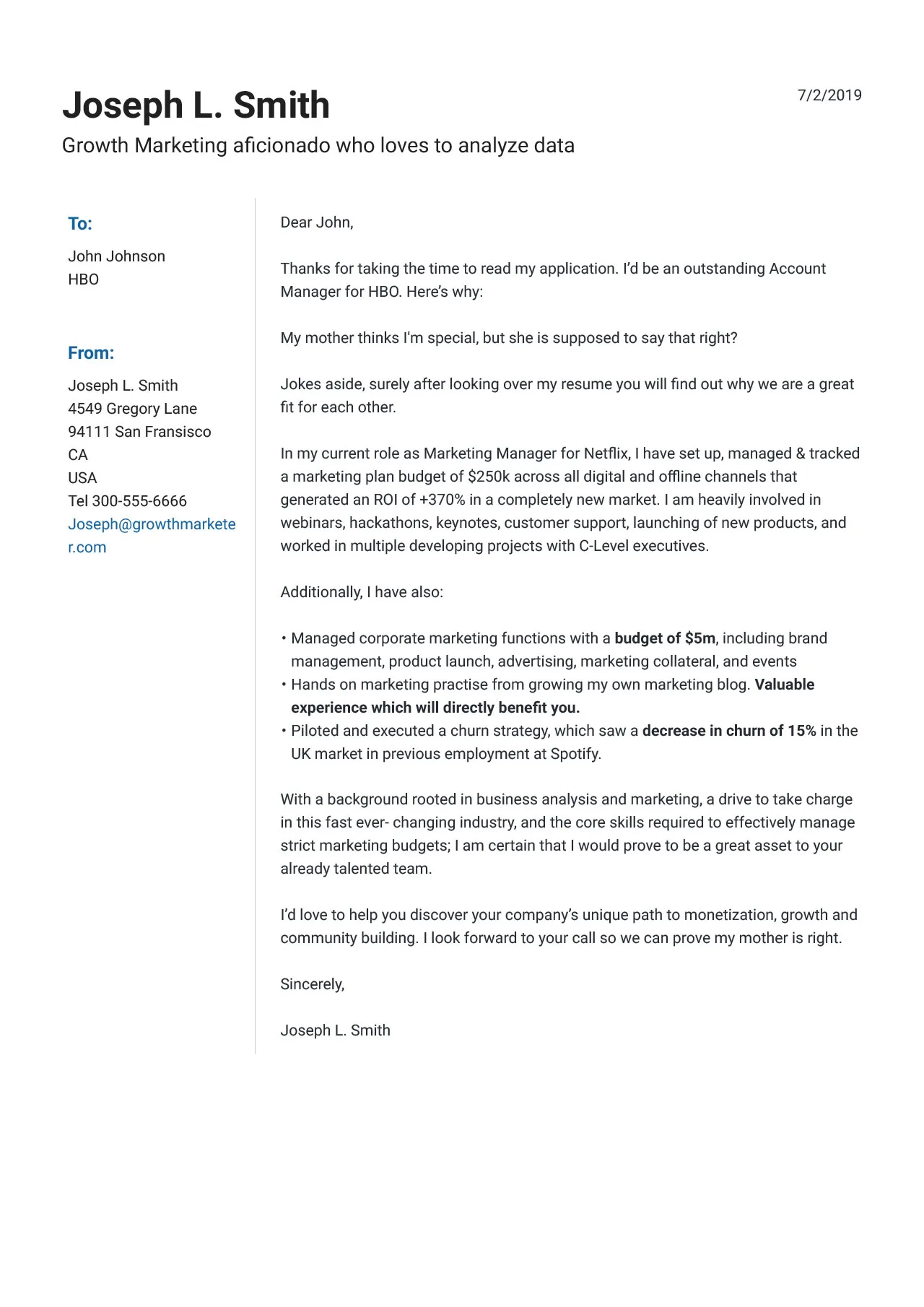What is a Marketing Cover Letter
A marketing cover letter is a crucial document that accompanies your resume when applying for marketing positions. It serves as your first impression and allows you to introduce yourself, highlight your relevant skills and experience, and express your enthusiasm for the role. Unlike a resume, which provides a factual overview of your career, a cover letter offers an opportunity to showcase your personality, writing abilities, and passion for marketing. A well-crafted cover letter can significantly increase your chances of landing an interview, as it provides context and depth to your application, setting you apart from other candidates. Think of it as your personal marketing campaign, designed to sell yourself to the hiring manager.
Why a Great Cover Letter is Important
In the competitive world of marketing, a compelling cover letter is essential. It’s your chance to tell a story that your resume alone cannot. A great cover letter demonstrates your communication skills, attention to detail, and understanding of the specific job requirements. It allows you to personalize your application and show the hiring manager why you’re the perfect fit for their team. Recruiters and hiring managers often use cover letters to gauge a candidate’s writing ability, assess their motivation, and determine whether they’ve taken the time to understand the company and the role. A strong cover letter shows that you’re not just sending out generic applications; you’re genuinely interested in the opportunity and have taken the initiative to tailor your message.
Key Elements of a Strong Marketing Cover Letter
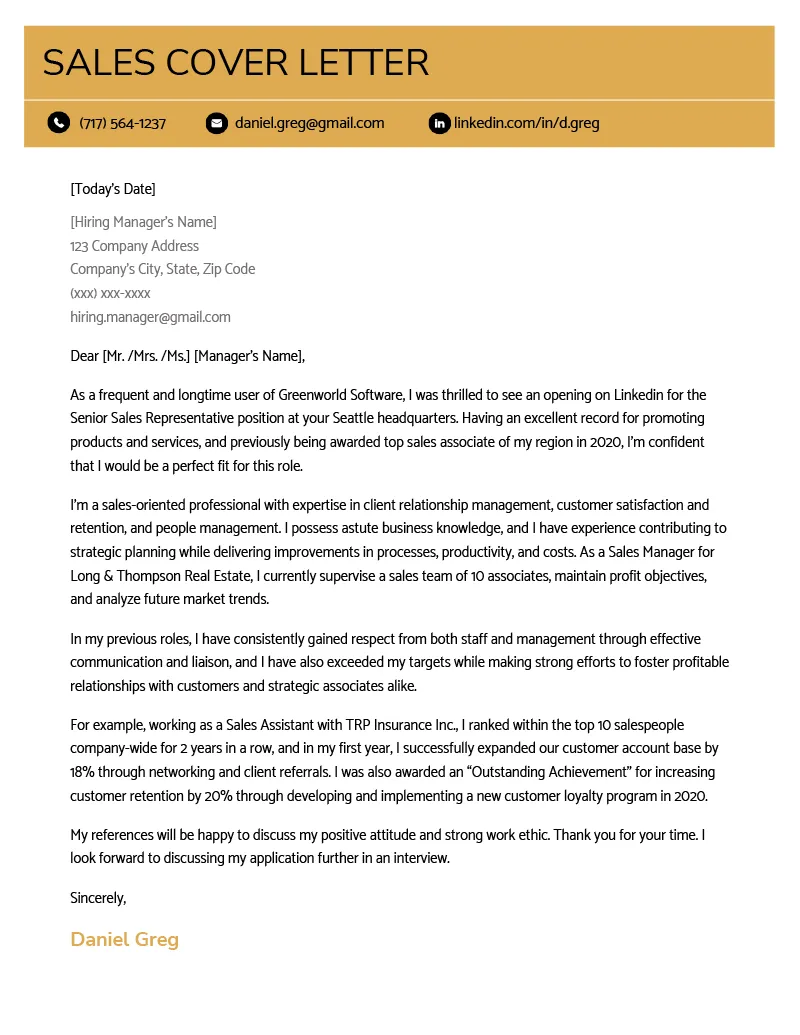
A strong marketing cover letter should be well-structured, concise, and engaging. It needs to grab the reader’s attention from the start and maintain their interest throughout. Ensure you customize each letter to the specific job and company. Generic cover letters are easily spotted and often discarded. Focus on these key elements to create a compelling and effective cover letter that helps you stand out from the competition.
Contact Information
Begin your cover letter with your contact information. Include your name, phone number, email address, and LinkedIn profile URL. This information should be clearly displayed at the top of the letter so the hiring manager can easily reach you. Make sure your email address sounds professional; avoid using informal or childish email addresses. Ensure your LinkedIn profile is up-to-date and showcases your relevant experience and skills. This provides an easy way for the hiring manager to learn more about you.
Greeting
Address your cover letter to a specific person whenever possible. Research the hiring manager’s name and title. If you can’t find a name, use a professional greeting like “Dear Hiring Manager.” Avoid generic greetings such as “To Whom It May Concern,” as they make your letter seem impersonal. Addressing the letter to a specific individual shows that you’ve taken the time to research the company and are genuinely interested in the position. It adds a personal touch that can make a significant difference.
Opening Paragraph

The opening paragraph is your chance to make a strong first impression. State the position you’re applying for and how you learned about the opportunity. Briefly mention why you’re interested in the role and the company. Use a strong opening statement that captures the reader’s attention. Show your enthusiasm for the position and highlight a key skill or achievement that aligns with the job requirements. Avoid clichés and generic phrases. Your opening should be concise, engaging, and leave the reader wanting to learn more about you.
Highlighting Your Skills and Experience
This is where you showcase your relevant skills and experience. Explain how your qualifications align with the job description. Provide specific examples of your accomplishments, emphasizing quantifiable results whenever possible. Use action verbs to describe your responsibilities and achievements. Tailor this section to the specific requirements of the job. Highlight the marketing skills mentioned in the job posting and illustrate how you’ve used them to achieve success in previous roles. Show the hiring manager that you possess the skills and experience they need.
Quantifiable Achievements
Whenever possible, quantify your achievements. Use numbers and data to demonstrate the impact of your work. For example, instead of saying “Increased social media engagement,” say “Increased social media engagement by 30% in six months.” Quantifiable achievements make your accomplishments more tangible and impressive. They provide concrete evidence of your abilities and the value you can bring to the company. Include specific examples to support your claims and provide context for your successes. Show hiring managers the real impact you’ve made in previous roles.
Showcasing Your Personality and Enthusiasm
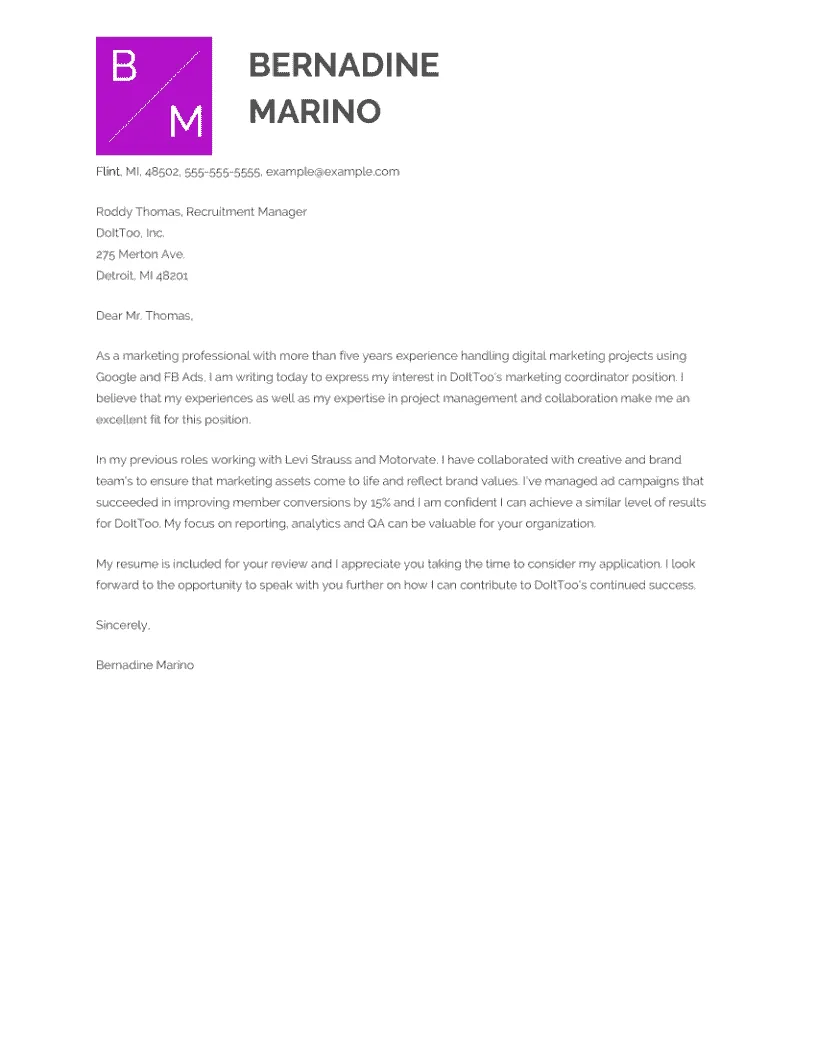
Let your personality shine through. While maintaining a professional tone, use your cover letter to express your enthusiasm for the role and the company. Share what excites you about the opportunity and why you’re a good fit for the company culture. This section allows you to connect with the hiring manager on a personal level. Show them that you’re not just qualified but also passionate and eager to contribute to their team. Avoid sounding generic or robotic; instead, inject your personality and genuine interest into your writing.
Call to Action
End your cover letter with a clear call to action. Express your interest in an interview and make it easy for the hiring manager to contact you. Reiterate your enthusiasm for the role and your belief that you can contribute to the company’s success. Thank the hiring manager for their time and consideration. Include your contact information again, and be sure to state your availability for an interview. Make it easy for them to move forward with your application.
Closing
Use a professional closing such as “Sincerely,” “Regards,” or “Best regards.” Avoid casual closings like “Thanks” or “Cheers.” Ensure your closing aligns with the tone of your letter. Always include your full name below the closing to provide a clear signature. Make sure your contact information is readily available so they can contact you easily.
Marketing Cover Letter Examples
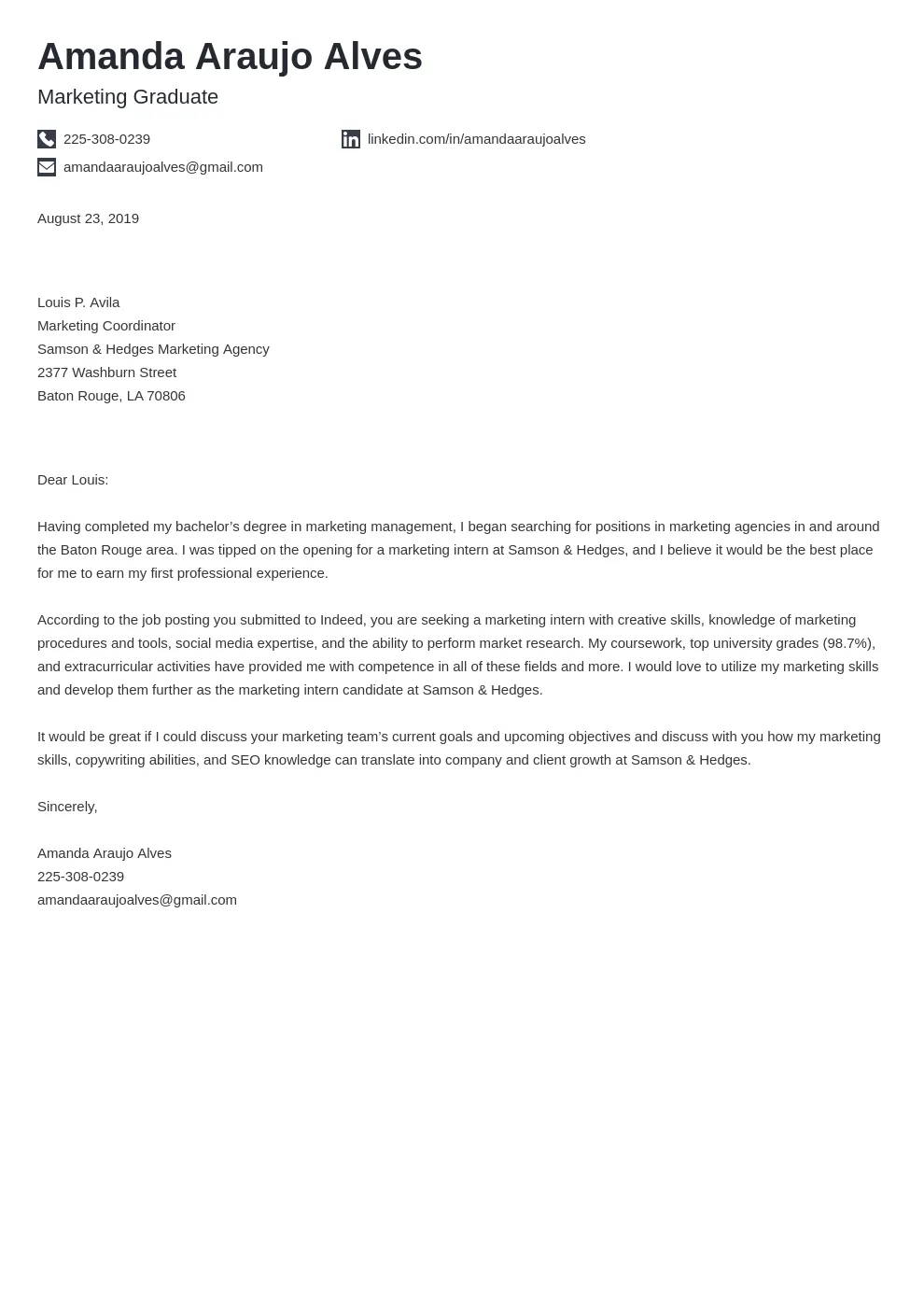
Reviewing examples can give you a better idea of the format and content to include in your cover letter. Here are a few examples tailored to different levels and marketing specializations.
Entry-Level Marketing Cover Letter Example
For entry-level positions, focus on your academic achievements, relevant coursework, internships, and any volunteer experiences. Highlight transferable skills such as communication, teamwork, and problem-solving. Show your enthusiasm for learning and contributing to the team. Mention any marketing projects you worked on, detailing the skills you used and the results you achieved. Tailor your cover letter to match the job description, ensuring you include keywords and highlight relevant experience, even if it’s limited.
Digital Marketing Cover Letter Example
When applying for digital marketing roles, emphasize your experience with digital channels such as SEO, social media marketing, content marketing, and email marketing. Include examples of successful campaigns and highlight your ability to analyze data and drive results. Mention any specific tools and platforms you’re proficient in, like Google Analytics, SEMrush, or HubSpot. Showcase your understanding of digital marketing trends and your ability to adapt to the fast-paced digital landscape. Demonstrate how you’ve used these skills to achieve measurable results for previous employers or clients.
Marketing Manager Cover Letter Example
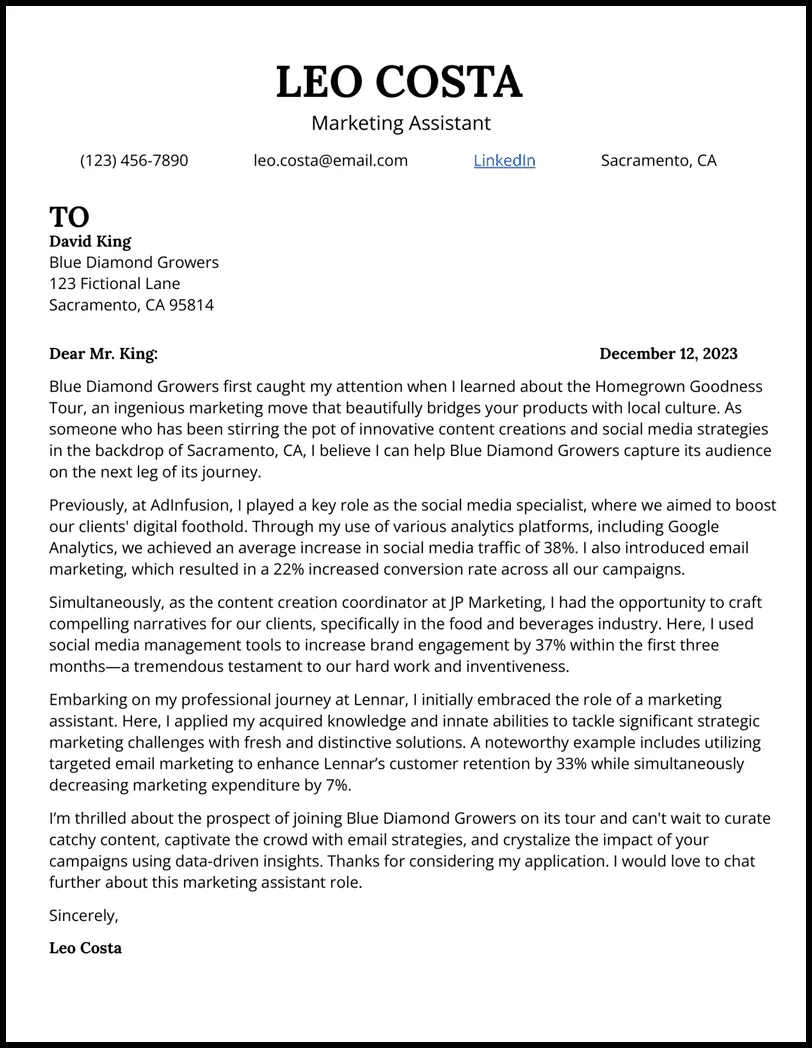
For marketing manager positions, highlight your leadership skills, strategic thinking, and experience in managing marketing campaigns. Provide examples of how you’ve developed and executed successful marketing strategies. Demonstrate your ability to lead and mentor teams. Show your experience in managing budgets, analyzing market trends, and making data-driven decisions. Quantify your accomplishments and showcase your ability to drive revenue growth and achieve business objectives. Emphasize your leadership skills, ability to manage teams, and strategic thinking.
Tips for Customizing Your Cover Letter
Customizing your cover letter is crucial for making a positive impression. Generic cover letters are easily recognizable and often overlooked. Taking the time to tailor your cover letter to each job application shows that you’re serious about the opportunity and have a genuine interest in the company. Researching the company and the specific role is essential to make the most effective cover letter.
Research the Company
Before writing your cover letter, research the company’s mission, values, and recent activities. Visit their website, read their blog, and follow them on social media. Understand their products or services, target audience, and marketing strategy. This research will help you tailor your cover letter to demonstrate your understanding of the company and its needs. You can then incorporate specific details about the company’s work into your letter, showing your genuine interest and initiative.
Tailor to the Job Description
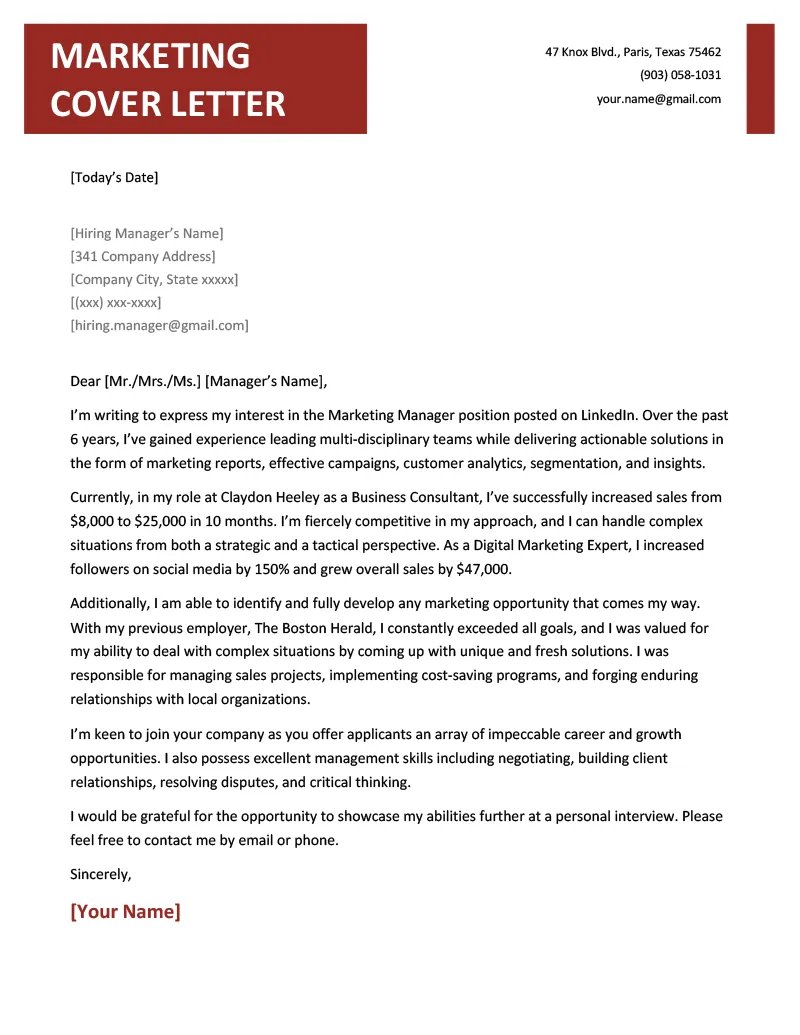
Carefully review the job description and identify the key skills and qualifications the employer is seeking. Use the job description as a guide to highlight your relevant experience and skills. Use keywords from the job description in your cover letter to show that you meet the required qualifications. Tailor your examples and accomplishments to match the job’s requirements. This ensures your application directly addresses the employer’s needs and demonstrates your ability to excel in the role. Focus on the requirements mentioned in the job posting.
Proofread Carefully
Always proofread your cover letter multiple times for any typos, grammatical errors, or formatting inconsistencies. A cover letter with errors can create a negative impression and suggest a lack of attention to detail. Have a friend or colleague review your letter to catch any mistakes you might have missed. Ensure the letter is easy to read and free from any errors. Use grammar and spelling check tools, but don’t rely on them entirely. Thorough proofreading is essential for a professional and polished cover letter.
Common Mistakes to Avoid
Avoiding common mistakes can significantly improve your chances of success. Be sure to review your cover letter for these issues.
Generic Content

Avoid using generic phrases and content that could apply to any job. Tailor your cover letter to each specific job and company. Customize your letter to showcase your understanding of the company and its specific needs. Generic content shows a lack of effort and genuine interest. Instead, provide specific examples of your skills and accomplishments. Use the company’s name and address the job description directly.
Typos and Grammatical Errors
Typos and grammatical errors can undermine your credibility and professionalism. Always proofread your cover letter multiple times and use grammar and spelling check tools. Ask a friend or colleague to review your letter to catch any mistakes you might have missed. Ensure your writing is clear, concise, and error-free. Errors create a negative impression and may lead the hiring manager to believe you lack attention to detail.
Lack of Enthusiasm
Demonstrate your enthusiasm for the role and the company throughout your cover letter. Express your genuine interest in the opportunity and why you’re a good fit. Show how you can contribute to the company’s success. Avoid sounding generic or robotic. Let your personality shine through and show your passion for marketing. A cover letter that lacks enthusiasm may not leave a memorable impression.
Cover Letter Formatting and Style
The formatting and style of your cover letter can affect readability and the overall impression you make. Follow these guidelines to create a polished and professional cover letter.
Font and Size
Use a professional and easy-to-read font such as Times New Roman, Arial, or Calibri. Keep the font size between 10 and 12 points for optimal readability. Ensure the font is consistent throughout the letter. Avoid using overly decorative or unusual fonts, as they can be distracting. Maintain a clean and simple design for the best results.
Length
Keep your cover letter concise. Aim for one page, or no more than 400 words. A long cover letter can overwhelm the reader and dilute your message. Focus on the most relevant information and accomplishments. Be clear and to the point, highlighting only the most important details. Ensure your cover letter is easy to read and get straight to the point.
Format
Use a professional format with clear sections and headings. Include your contact information, a greeting, an opening paragraph, body paragraphs highlighting your skills and experience, a call to action, and a closing. Use ample white space to make your letter easy to read. Ensure your formatting is consistent throughout. Proofread your letter to make sure everything is aligned.
Conclusion
Writing a compelling marketing cover letter requires careful planning, research, and attention to detail. By following these guidelines and examples, you can create a cover letter that highlights your skills, experience, and passion for marketing. Remember to customize your cover letter for each job application and showcase your unique strengths. Good luck with your job search!
